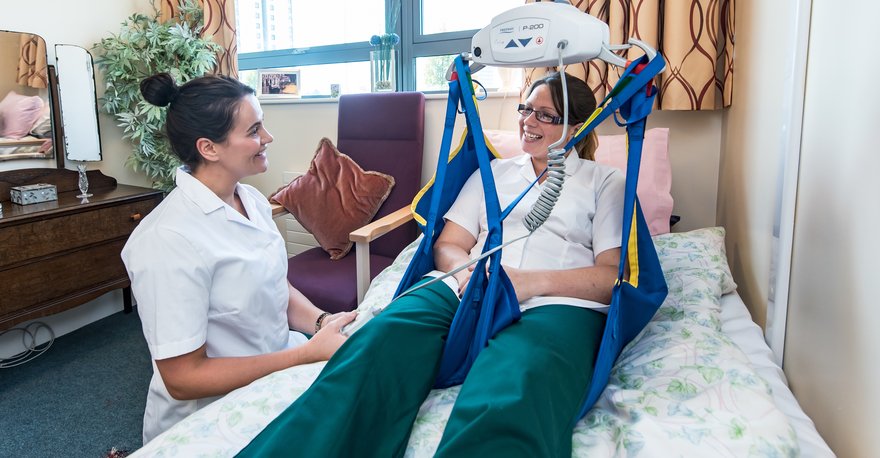
Occupational Therapy is an enticing career field for the individuals who not only want to serve disabled people but also desire for a bright future. This profession offers distinct job titles depending on the degree that one owns. If you gain an associate’s degree in occupational therapy from an accredited program, you can practice as a certified occupational therapy assistant. While with a bachelor’s, master’s, or dual degree, you can practice as an Occupational therapist.
OTAs work under the supervision of Occupational therapists, and assist them to collaborate with patients and enable the patients’ abilities to lead a comfortable and normal daily life.
The impressive job description of occupational therapists and occupational therapy assistants fascinates the students to be in this profession. If you are aspiring to practice as a certified occupational therapy assistant, it is a must for you to be aware of their duties, roles and responsibilities, places where they work, and activities they get involved with on a regular basis.
Here, you can review the detailed job description of an occupational therapy assistant and can plan you career accordingly.
Duties and Responsibilities of an Occupational Therapy Assistant
- Any patient going through physical, mental, developmental, or emotional difficulties is treated by occupational therapy assistants. They set up treatment plans for such patients to help them recover from their problems using rehabilitation.
- Interrogate their clients to know about their issues, go through their medical records and history, and make patients’ goals clear in order to provide them the best results.
- These professionals guide physically disabled people and teach mobility-enhancing exercises to them. In addition to this, OTAs also make their patients aware of the appropriate ways of getting into a wheelchair from the bed, and how to stretch their affected limbs and muscles with ease.
- They plan mental development activities for the patients going through any mental disorder.
- While working with children, they plan to play games with them that improve hand-eye coordination.
- They may apply braces to the patients, schedule their appointments, answer their calls, prepare and clean treatment areas and equipment.
- Also, occupational therapy assistants teach the patients to dress, bathe, and feed themselves without much stress.
- OTAs analyze the patients’ activities and record all the details regarding their improvement or degradation.
- Keep a record of bills of services provided to the client.
- They abide by legal regulations and follow standards and procedures accordingly. Besides this, they practice as an occupational therapist by complying with professional policies, standards and local, state and federal rules , and Joint Commission on Accreditation of Healthcare Organizations (JCAHO) standards.
- Occupational therapy assistants very well know to operate the equipment required for the treatment of the patients, troubleshoot breakdowns and issue in the devices, repair and maintain them.
Places Where Occupational Therapy Assistants Work
Occupational therapy assistants are creative professionals who find smart and innovative ways to assist the disabled people in carrying out their daily chores smoothly. They guide such patients regarding everything from eating food to operating a computer and other gadgets. While thinking of OTAs, you would imagine them working and serving patients in hospitals, clinics, and private nursing homes. But, job opportunities for the assistants are not limited to these places. They are employed at the places one can’t even think of. There are innumerable variety of places where an occupational therapy assistant can work. These are some of the places where an occupational therapy assistant is employed –
1. Nursing Homes
It is amongst the most common places where you can find an occupational therapy assistant practicing under the guidance of an occupational therapist. Here, they work with geriatric patients and find out the most effective ways for them to carry out their day-to-day life activities (hindered due to illness, injury, or dilemma) efficiently.
2. Home Care Settings
Occupational therapy assistants provide support and care to the individuals in home care settings whose lives become stagnant due to an injury that occurs because of an accident or some kind of illness. They plan skillful strategies to augment their interest in living their routine lives easily and normally. Besides this, their treatment also includes some exercises, tasks, and activities that help the patients recover fast and in an effective manner.
3. Rehabilitation Centers and Physical Therapy Offices
OTAs serve many patients in rehabilitation centers and physical therapy offices who are unable to lead a normal daily life due to some impairments, injuries or illness. These professionals find out creative and intelligent solutions to solve these issues and aid them in accomplishing their routine tasks conveniently.
4. Half-Way Houses
Occupational therapy assistants not only serve the patients in household chores but also provide guidance in daily tasks related to their jobs. In halfway houses, OTAs help the individuals balance a checkbook, remind them to keep their appointments and assist them to prepare for job interviews.
5. Schools
Kids who are going through physical, cognitive, behavioral, emotional, or some other kind of imbalance are served by occupational therapy assistants in school settings. Assistants plan for several skilled strategies and learning solutions to help children overcome such issues. OTAs involve teachers and parents of students in their treatment plans for the best outcomes.
6. Speech Pathologist Offices
Patients who suffer speech or communication impairments are assisted by the occupational therapy assistants at speech pathologist centers. Here, they may also serve clients affected with motor problems related to the mouth.
7. Audiologist Offices
Individuals with hearing impairments are also treated by occupational therapy assistants at audiologist offices. Here, they work under the supervision of audiologists to offer efficient solutions of audiology, so that people with such impairments can communicate easily and effectively.